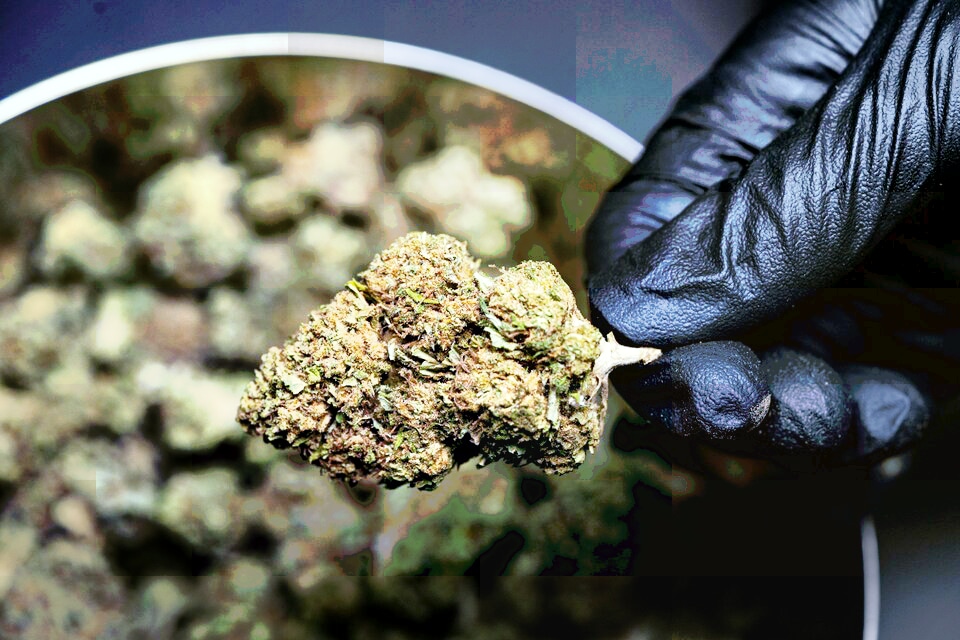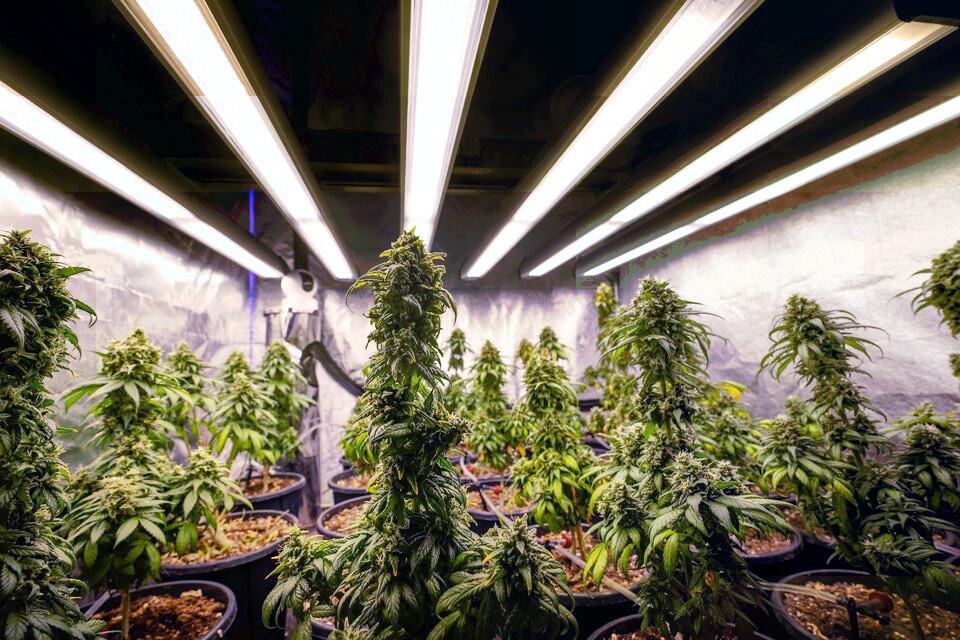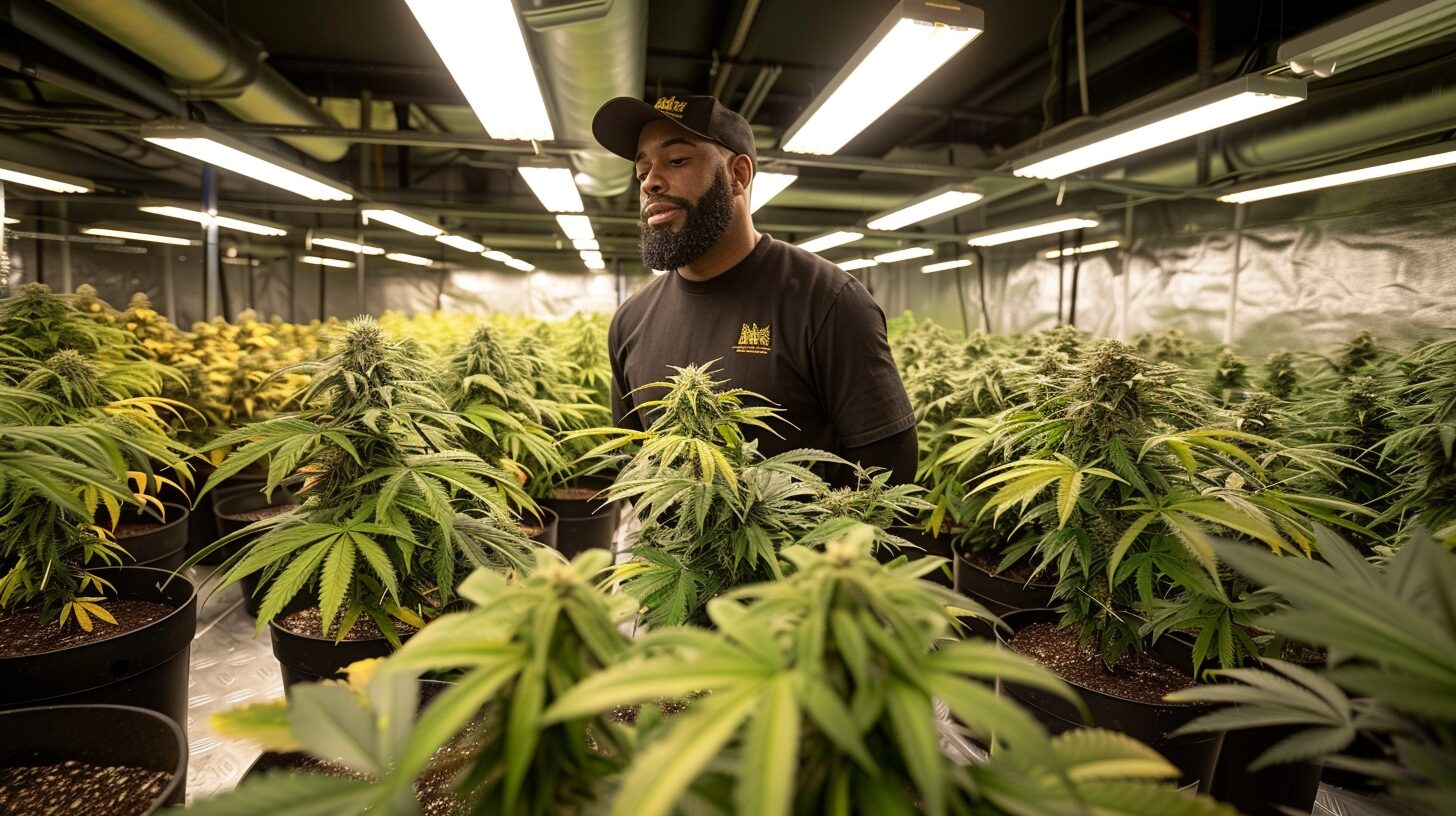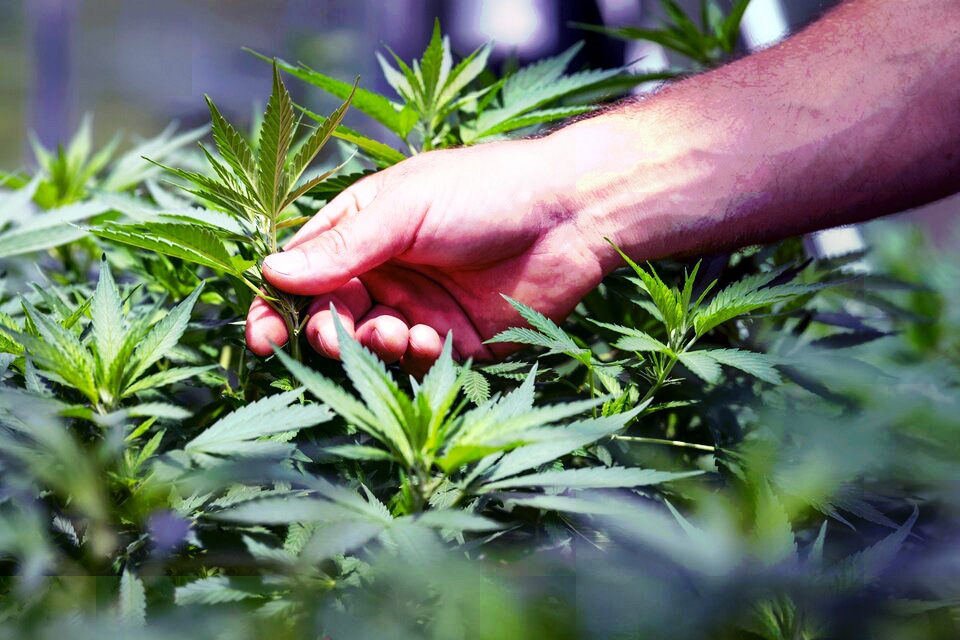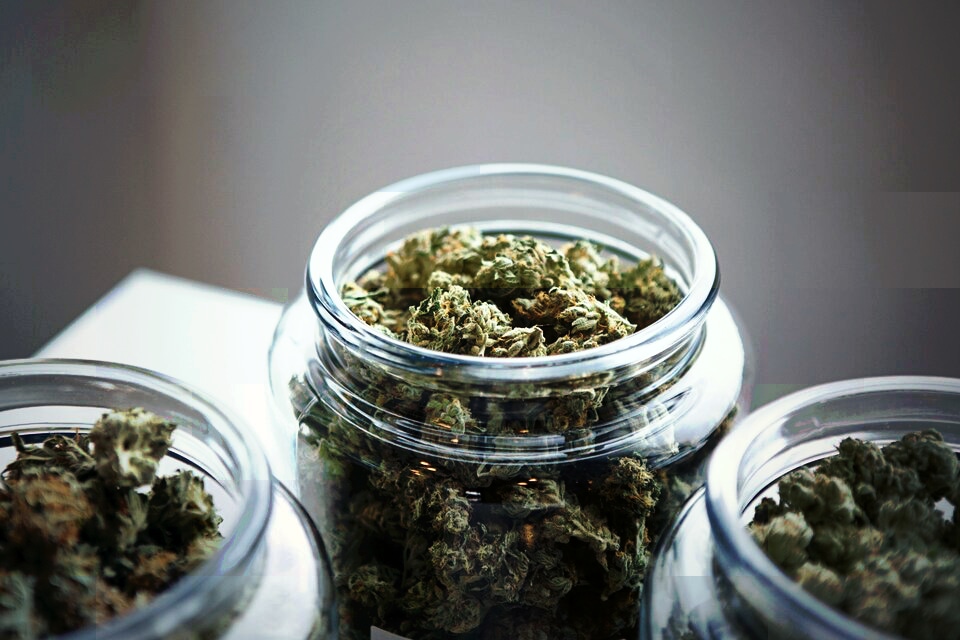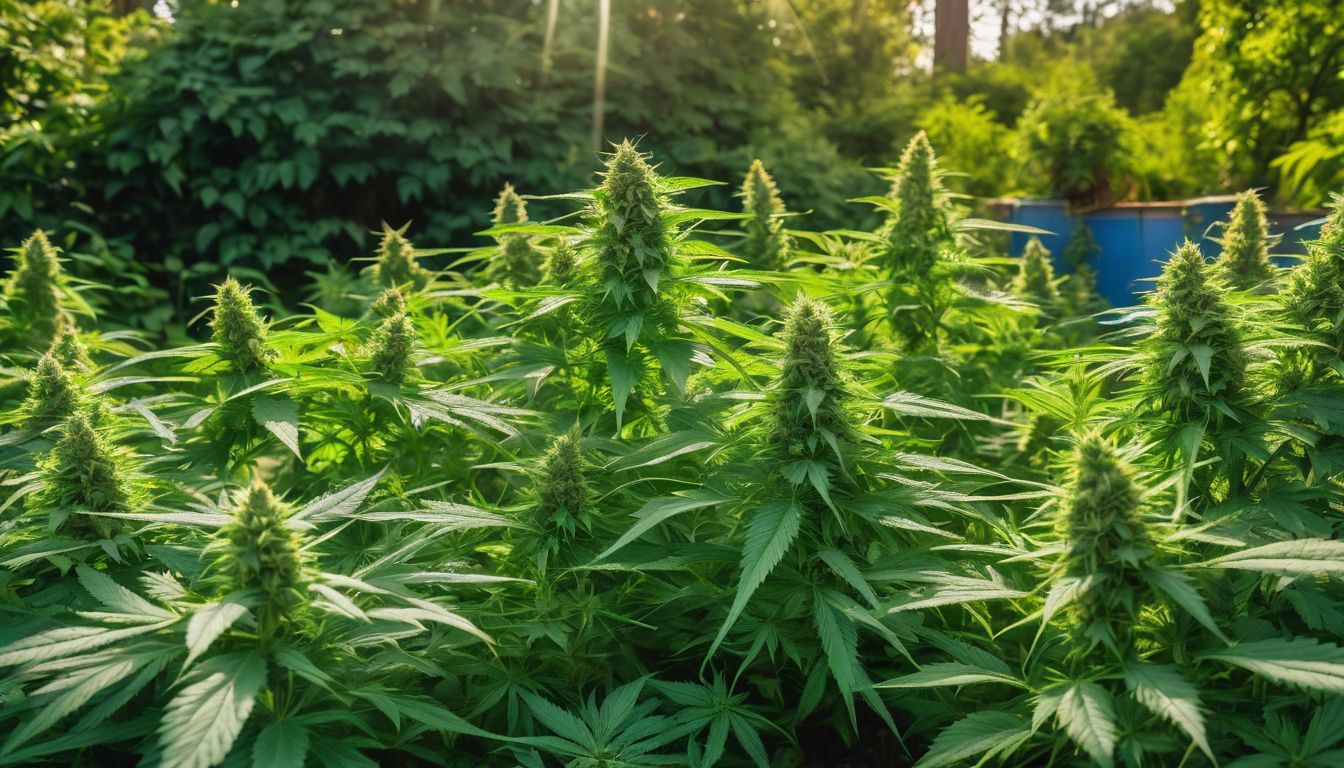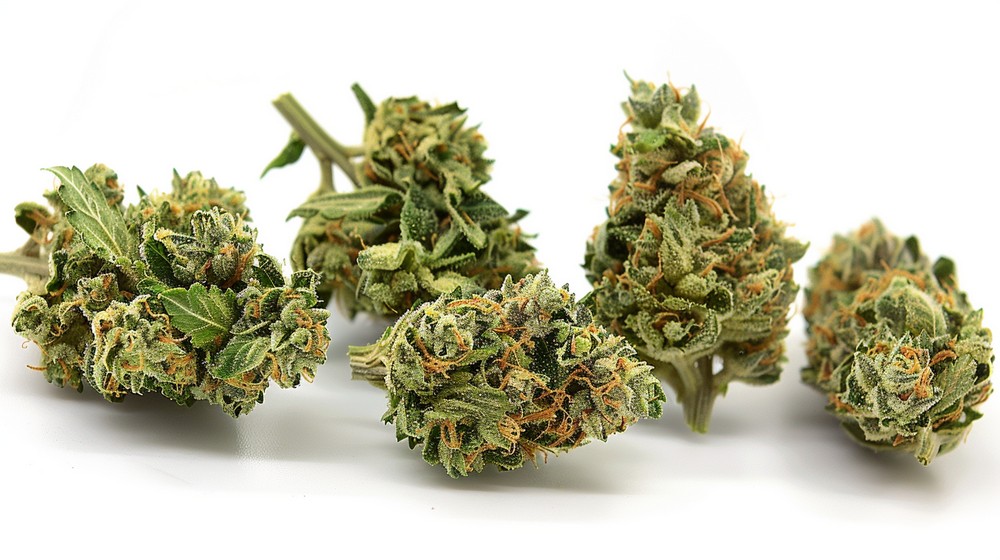Cultivo de cannabis com solos quentes: Guia introdutório
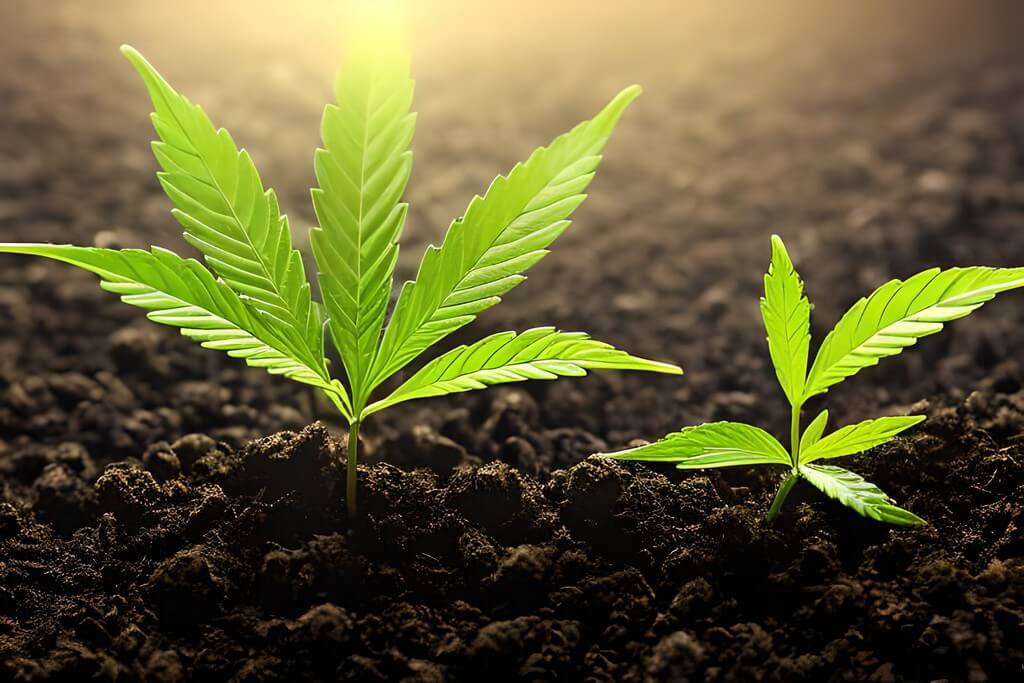
Welcome curious growers facing the challenge of hot soil in your marijuana gardens. This burning issue can literally make itself felt under our feet and in our beloved plants.
In this article, we’ll cool your worries by providing solutions to manage an overly vigorous soil and ensure your crops reach their full potential.
Keep reading and discover how to give your plants the home they deserve!
Key Takeaways
- Hot soil has a lot of nutrients, which can be detrimental to cannabis plants. It’s important to balance the amount of food with less fertilizer and improve the soil with perlite or clay pebbles.
- If the soil has too many nutrients, plants can suffer burns. Flushing the soil with water can reduce these nutrients and help the plant recover.
- Organic fertilizers like bat guano can be used to avoid overloading the soil and promote healthy cannabis growth.
What is Hot Soil?
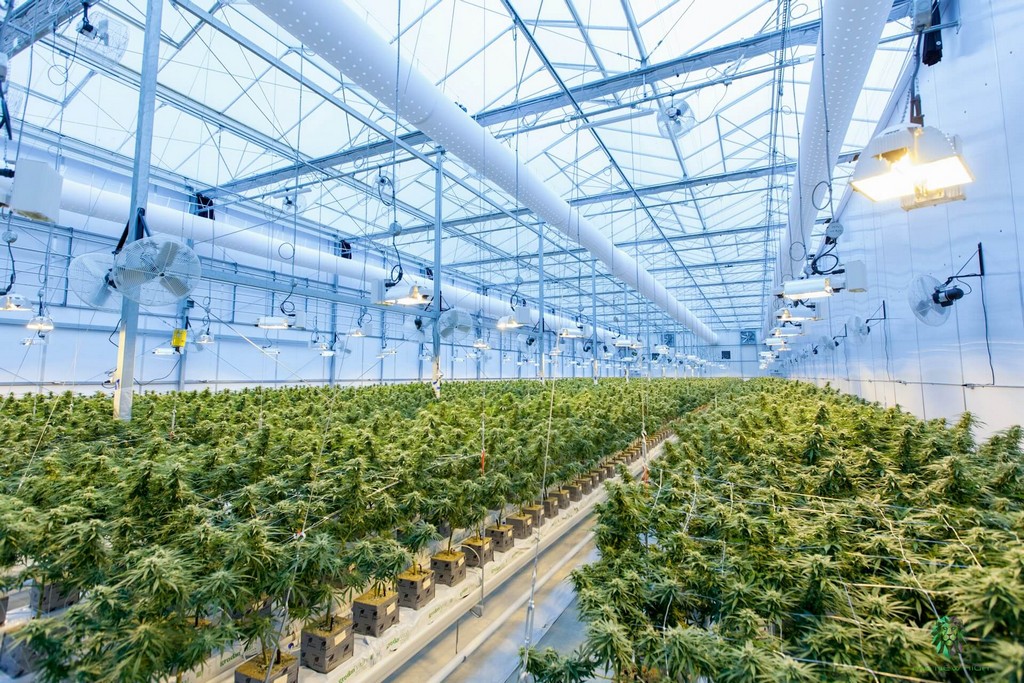
Hot soil is that type of earth that has a lot of nutrients, as if it’s super-charged for plants. It’s like a food party for them. But watch out, even though it may seem great, it can be too much and cause harm.
Imagine being given all the food in the world at once, it would be overwhelming, wouldn’t it? That’s how plants feel with this soil. It’s widely used in cannabis growing because it helps plants grow big and strong.
Some gardeners do this by mixing things like bat guano and earthworms to give it that extra power.
Effects of Hot Soil on Cannabis Plants.
When you dive into the world of cannabis cultivation, you’ll encounter a term that sounds like it came from a day at the beach, but don’t be fooled.. Hot soil is a serious issue that can make even the most experienced grower sweat.
Imagine it like this: your little plants are waiting for a balanced meal and, suddenly, boom! They find themselves with a nutrient buffet they can’t digest — come on, not even the best chef would want that for their star dishes.
Overfeeding Nutrients
Giving your cannabis plants too many nutrients can be a big problem. This is called “nutrient burn.” The roots absorb more food than they need, and this damages the plant.
The leaves can turn yellow or brown, and growth may stop. It’s like when you eat too much cake, your stomach hurts.
For plants, it’s important to have the right amount of nutrients, especially in the flowering stage. If you see signs that your plant is getting too much food, you need to act quickly.
You can flush the soil with water to reduce the nutrients. This step is very necessary for the plant to become healthy again and continue growing strong. Now, let’s look at how to solve the hot soil problem.
Solution to the Hot Soil Problem
Hot soil can be a headache for cannabis growers. Here’s how to fix it:
- Reduce the amount of food. Too many nutrients burn the plants. Use less fertilizer in your super soil.
- Check the water. If it has a lot of parts per million (ppm), use purer water.
- Mix it well. Add perlite or clay pebbles to the potting soil to improve root ventilation.
- Transplant. Move your plants to new living soil if you think the old one is too loaded.
- Add earthworms. Earthworms help keep the soil healthy and with good nutrients.
- Take a break from chemicals. Try organic fertilizers, like bat guano, to avoid overloading the soil.
- Don’t ignore the signs. If you see yellowing or burnt leaves, act quickly to save your plants.
Different Soil Types for Cannabis Cultivation
The perfect soil for your cannabis plant is like finding a good pair of shoes; it must fit just right… and you see, my friends, not all soils are created equal.
From texture to nutrient balance, each type has its own special spark that can either make your green friends soar to the sky or sink in despair—and of course, we don’t want that!
Sandy
Cannabis loves sandy soil, you know? It’s light, drains well, and these plants’ roots spread out easily like kids playing on the beach. But hey, it’s not just throw and grow.
You have to be careful because sometimes it lacks nitrogen, and you might think, “Oops, my plant is staying small!”
For that, you mix in some coco coir and perlite, and boom!, you’re giving your soil superpowers. The mix helps a lot with water retention and gives the roots space to breathe.
Think of it as making a comfy bed for your cannabis plants. They’ll thank you with greener leaves and fatter buds. And don’t forget! A little earthworms work magic in any soil, even sandy ones!
Clay
Clay soil can be a great friend for your cannabis plants, but only if you know how to treat it well. It has the ability to retain water, meaning your plants won’t dry out as fast.
However, be careful, because this type of soil also holds on to nutrients a lot, and that can be too much for your plants at times.
For everything to run smoothly, you have to make sure the drainage is on point. Good drainage will prevent issues like root rot. And you know what? Some indoor growers actually prefer clay for these very characteristics.
You just have to find the right balance between water and air. With a bit of practice, your clay soil could take your cannabis plants to new heights.
Loam
Franco is an expert at this cannabis plant thing. He knows a lot about the best soil types and how to make plants grow strong and healthy. He’s been working hard with loam soils.
This soil is great because it has a good ability to drain water and also to store it.
This type of earth helps the cannabis roots develop well. Franco also recommends using bokashi to improve the soil. He says this trick helps the plants get more food and grow better.
Boy, Franco really knows what he’s doing! His plants are always happy and full of life.
Improving Soil Quality for Cannabis
Improving soil quality for cannabis: Discover how to transform that rebellious plot into the perfect bed for your cannabis plants to feel like queens—yes, even you can have a green thumb with the tips I have prepared..
keep reading!
Coco Coir
Coco Coir is incredible for your cannabis plants. It gives them a lot of air and helps them grow strong and big. This medium has no soil, but it feels like you’re working with it.
Your plants’ roots will be very happy here.
Using Coco Coir is also good for our planet. It can be used many times and then turned into compost. This is great, because we’re not throwing away things that can still help plants in the future.
So yes, growing cannabis in Coco Coir is a great idea.
Perlite
Perlite is like a superhero for cannabis plants. Imagine a material that helps roots breathe better and water flow easily. That’s perlite! This volcanic material, when mixed into the soil, prevents it from compacting.
Your marijuana roots will be super happy because they’ll be able to grow without feeling cramped.
Using perlite has another huge benefit: it stores water like a tank. But watch out, it doesn’t let the roots drown. This is perfect for those soils that get really hot, because it keeps the little plants cool.
And yes, your green friends will thank you with strong, healthy growth. Perlite really is a wonder for your cannabis garden!
Clay Pebbles
Clay pebbles are great allies for your cannabis plants. They help a lot with hot soil, as they maintain the right temperature and store water for the roots to use when needed.
Think of it as giving your plants a little spa in their own home. These magic balls also make the soil sturdier and better for the little plants to grow happily.
But wait, there’s more. Clay pebbles aren’t just good with water and heat, they also help the soil breathe better. And that’s super important because the roots need air to live strong and healthy.
Plus, using clay pebbles is good for the planet. We’re giving the earth a hand while making our cannabis happy. It’s a win-win situation!
Vermiculite
Vermiculite works wonders in cannabis soil. It comes from very old rocks and helps water stay where the roots can use it. If you mix in about 10% with your soil, your cannabis plants will grow better.
This shiny, lightweight stuff also lets the soil breathe, which means fewer root problems.
And that’s not all, friends. Vermiculite makes your soil special, and your plants will thank you with healthy growth. Plus, it’s perfect for mixing with perlite and getting that balance between water and air that your cannabis needs.
Let’s now talk about another friend of the soil that roots adore: earthworms..
Earthworms
Earthworms are like little workers in your cannabis garden. They spend the day eating soil and leaving behind a magical fertilizer, known as humus. This material is gold for your plants because it improves soil quality.
It turns out earthworms don’t just do that. A study from the European Journal of Soil Science tells us how they’re experts at recycling. With them, your soil gets aerated, retains water better, and even your plants’ roots are happier.
Put worms in your soil and watch it change. These little friends’ waste is called “worm castings” and it’s a nutrient bomb for your green plants. They have what plants need to grow strong.
And don’t worry about feeding them ; they find their way and do their magic in silence, without fuss or complications. It’s a win-win with these little creatures!
Organic vs Synthetic Fertilizers for Cannabis
In cannabis gardening, the choice of fertilizer can significantly influence the health and yield of the plants. While organic fertilizers nourish the soil and promote a sustainable ecosystem, synthetics offer a more controlled dosage of nutrients.
– Organic fertilizers are derived from natural sources such as compost, manure, bat guano, and bone meal. These break down slowly, releasing nutrients gradually, which helps improve soil structure and stimulate biological activity.
– Synthetics, on the other hand, are concentrated chemical formulations that provide immediate nutrient availability. This can result in faster growth, but with the risk of overfertilization and root damage if not used correctly.
– Using organic fertilizers tends to be more environmentally friendly. They replenish the soil and reduce reliance on potentially harmful chemical products that can leach and contaminate groundwater.
– With synthetics, precision is key. They allow growers to adjust nutrient levels to the exact needs of the plants at different stages of their life cycle, although this requires more advanced knowledge of plant nutrition.
– The choice between organics and synthetics can also affect the taste and potency of cannabis. Many enthusiasts argue that organics produce a richer, more natural flavor due to the less invasive growing methods.
– Sustainability is another factor to consider. Organics support regenerative growing practices that maintain long-term soil fertility, while synthetics can degrade soil quality over time.
– In terms of cost, organics may be initially more expensive, but they often reduce the need for pesticides and other additives, balancing out costs in the long run.
– The application of organic fertilizers fosters a strong root system that is fundamental to the overall resilience and health of the cannabis plant.
Growers should evaluate their cultivation practices and goals when deciding between organic and synthetic fertilizers to achieve the best results in their crops. Next, we’ll explore how to reuse old soil for more economical and sustainable cultivation.
How to Reuse Old Soil to Save Money
Saving money is key when growing marijuana. Reusing old soil is a smart way to do it. Here are some steps:
- Revitalize the soil by adding compost or organic manure. This brings it back to life and prepares it for the next plant.
- Check the pH and nutrients before reusing it. This ensures your plants will grow healthy.
- Mix perlite into your old soil to improve drainage ability. Your roots will say “thank you”.
- Don’t forget clay pebbles, which help retain water without drowning your little plants.
- Incorporate earthworms to aerate the soil and break down organic matter.
- If you see something missing, add natural fertilizers as needed. But always be careful not to overfeed them.
- Using vermiculite also helps, as it maintains the right moisture.
- Give the old soil a second chance by shaking it well to remove any dead roots and leaves.
The Conversion of Light Energy into Chemical Energy in Cannabis Plants
Cannabis plants use sunlight to do something incredible. They take that light and turn it into food to grow. This is called photosynthesis. In the green leaves, there are tiny “factories” that work with light.
These factories are called chloroplasts, and they allow the plant to take water and CO2 to create sugars that feed the plant.
But food is not the only thing they make; they also produce THC and CBD. These are the ingredients that make marijuana so special. Photosynthesis in cannabis is very important because that’s where these substances come from.
With plenty of sunlight, cannabis can make more THC and CBD, which are what growers of this plant are looking for. So, sunlight is not only good for growth but also for making marijuana more potent!
Conclusion
Growing marijuana is no game, especially when we’re talking about hot soil. If you embark on this adventure, remember that the soil needs balance. Too many nutrients or too much heat can affect your plants.
But don’t worry, you’ll find the sweet spot with practice and patience. Go ahead, the garden of your dreams awaits you!
To better understand how cannabis plants convert light into useful energy for their growth, be sure to visit our article on how marijuana transforms light energy into chemical energy.
Frequent Questions
1. What is “hot soil” in cannabis cultivation?
Hot soil is a type of soil that has a lot of nutrients, sometimes too many for young cannabis plants. This can cause problems like nutrient deficiencies, because the plant can’t take in everything it needs.
2. How does hot soil affect the vegetative stage of marijuana plants?
During the vegetative stage, marijuana plants need certain nutrients to grow well. If there are too many, as in hot soil, they can suffer root damage and not grow properly.
3. Can hot soil cause root rot in marijuana?
Yes! If the soil retains a lot of water due to its high water retention, and doesn’t have good drainage ability, the marijuana roots can rot. Using things like clay pebbles can help prevent this.
4. What is ppm and how is it important for hot soil in marijuana cultivation?
PPM stands for “parts per million” and is used to measure the nutrients in the water you give your plants. Knowing the ppm helps you understand if your hot soil has too many nutrients or not for your marijuana plants.

